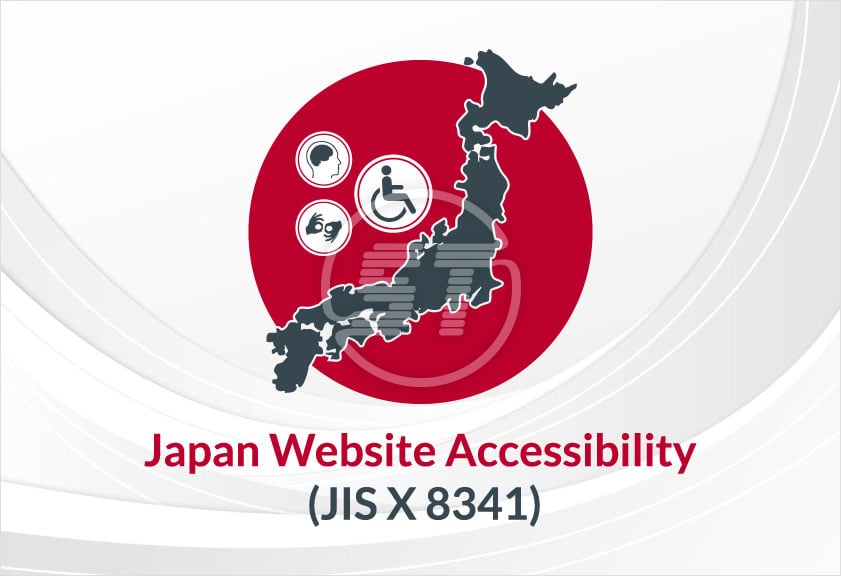Every country across the world has made it compulsory for businesses to provide accessible digital content. Most countries have established accessibility laws to achieve these goals. The good thing is that most acts/laws are based on or inspired by Web Content Accessibility Guidelines (WCAG). However, there are specific guidelines as well applied only to a particular state or country.
Here we will understand what accessibility laws Japan has for government agencies and businesses operating in the country. Though it requires a subject matter expert to explain the laws and legal requirements, we will try to cover an overview of the law to make information and technology accessible to everyone.
YOU MAY ALSO LIKE: Importance of accessibility compliance
Digital accessibility standards for Japan
Japan’s web accessibility regulation is Japanese Industrial Standards (JIS) X 8341-3. It is a legal obligation for all public and private sector organizations to comply with the regulation. The law was first enacted in 2004 and revised in 2010 to incorporate updated WCAG standards (other revisions have happened over time).
JIS X 8341-3 includes conformance levels A, AA, and AAA to establish accessibility on all the websites and applications. The Japanese Industrial Standards get updated every five years and can soon expect some more latest updates to include the new success criteria of WCAG 2.2.
The regulation asks all agencies and businesses to offer reasonable accommodations to disabled users for digital elements that are not accessible according to JIS X 8341-3.
If businesses fail to conform to the regulations, they may face legal penalties of up to ¥200,000 ($1,700 USD).
YOU MAY ALSO LIKE: Importance of WCAG Testing
History and Scope of JIS X 8341-3
JIS X 8341-3 is a national standard for Japan established by the competent minister. When it is required to be revised, the competent minister will confirm, revise, or abolish the act as per digital scenario requirements.
As per the Official Gazette of Japan, the standard was established on June 20, 2004, the first revision happened on August 20, 2010, and the latest revision was done on March 22, 2016, and confirmed on October 20, 2020 (published in the Official Gazette).
The act is also supported by ISO/IEC 40500:2012. JIS X 8341-3 is identical with ISO/IEC 40500 in technical content, structure, and wording for regional or national standards, or the regional or national standard is consistent in technical content with minimal editorial changes as specified in section 4.2 of ISO/IEC GUIDE 21-1:2005.
The national standards can be modified from the international standard ISO/IEC 40500:2012 only if technical differences are indicated and explained.
The national standards are not equivalent to international standards (ISO/IEC) in technical content and composition. However, it does not impact the adoption of international standards ISO/IEC 40500:2012 in Japan. (Read more details about Japan Accessibility standards. and read the details.)
It is recommended that JIS will be revised every five years, but this is subject to the approval of the competent minister. The revision may happen earlier as well if the minister feels the need for amendments to the standards.
Likewise, the competent minister can allow similar guidelines to be used for many years without revising them. They may allow similar standards to be published in the Official Gazette year after year.
Moreover, if a competent minister finds that JIS X 8341-3 has done its role and achieved the goal for what it was made for, they can abolish it. In addition, the standard may be abolished completely, or some parts may be migrated to a new JIS, depending on the situation.
YOU MAY ALSO LIKE: Web accessibility testing tools
Legal requirements of JIS X 8431-3 or the Act for eliminating discrimination against persons with disabilities
- The national government and local public entities must formulate suitable measures to eliminate web accessibility issues.
- All organizations are required to provide accessibility training to their relevant staff and ensure that websites/applications are compatible with assistive technology.
- No government or local entity should violate the accessibility guidelines and should not promote discrimination against users with disabilities.
- If a user with a disability encounters any accessibility barrier and reports it to the organization, it is that organization’s responsibility to eliminate the issue as soon as possible provided there is no burden associated with the resolution of that issue.
JIS X 8431-3 is beneficial for businesses that operate in Japan!
Japan has a huge industrial base and thus, all businesses must embrace digital accessibility. It is a good sign that many businesses maintain digital accessibility by offering accessible digital content to their customers.
In Japan, around 9.6 million people suffer from some type of disability, which is more than 7% of its total population. Besides, approx. 36.4 million people aged 65 or older (in September 2021). These are some people who need accessible digital content no matter how a business includes it in its web design and development process.
The above-mentioned numbers are going to increase every year. Thus, adhering to WCAG standards is the only choice for businesses to maintain their conversions and profits for a longer span. A compliant website can be an asset for a business that will improve its return on investment by reaching out to a wider segment of its audience.
Is your website, web application, documents, or mobile application accessible for people with disabilities? With a team of experts, we provide managed WCAG website accessibility services including audit, strategy, design, development, website remediation, document remediation, VPAT report, ongoing monitoring, and support. Reach out hello@skynettechnologies.com or request a quote.


